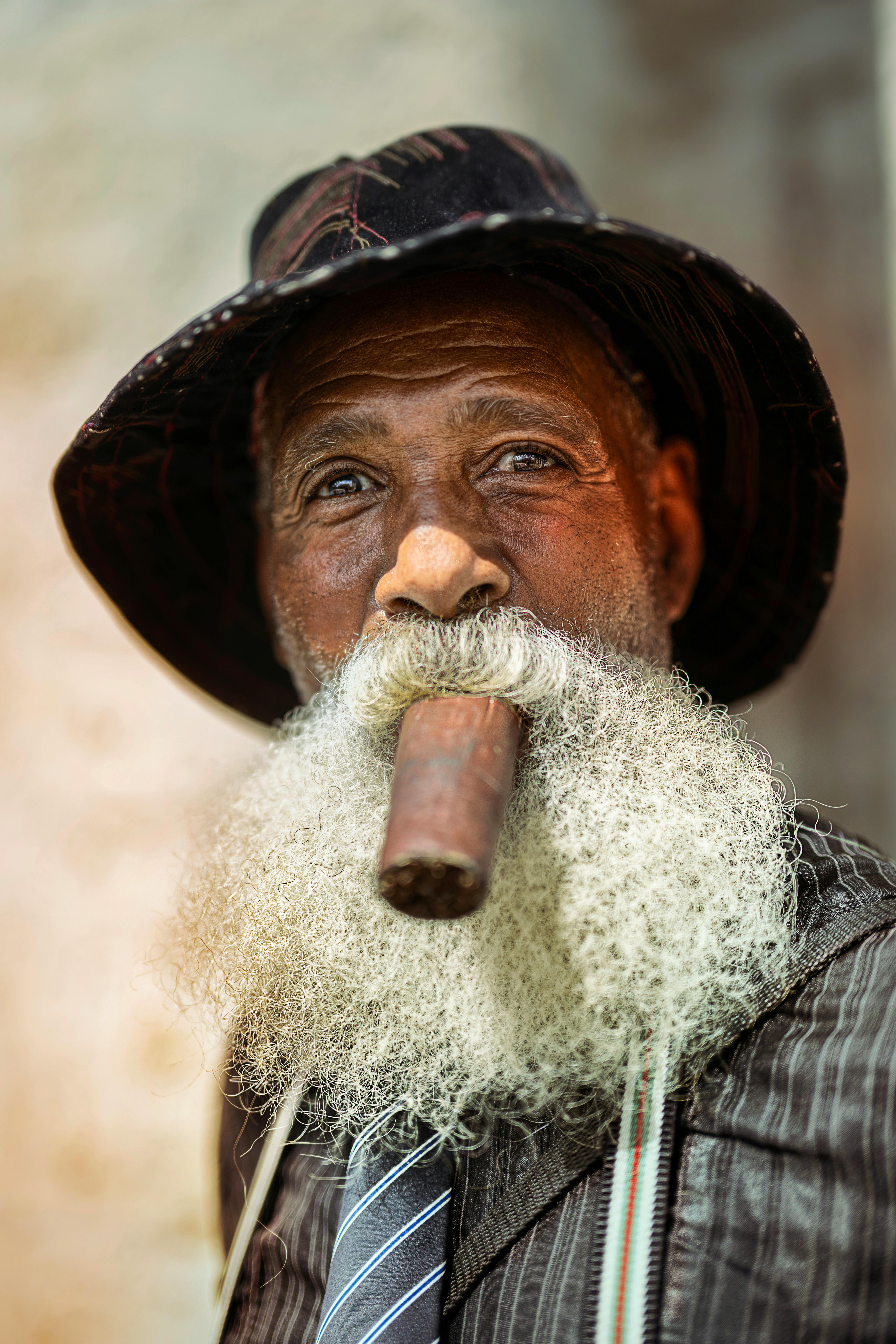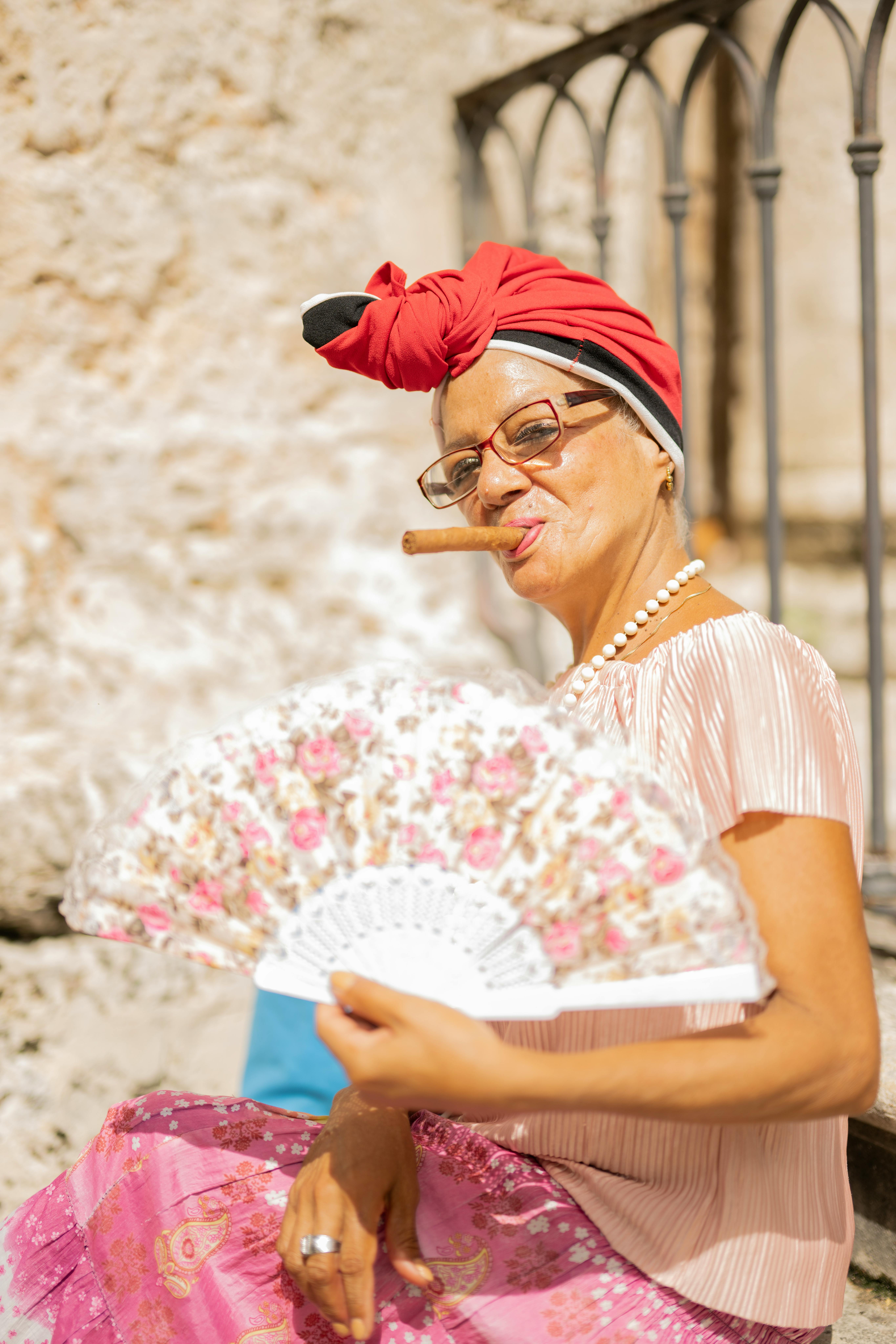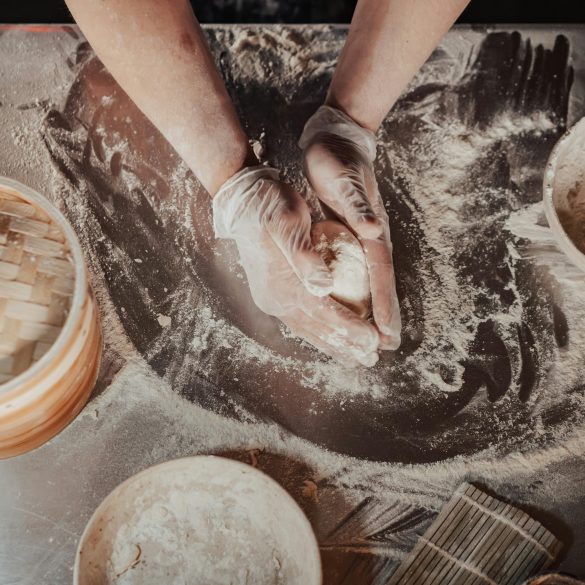Cuban Cigars: History, Culture, and the Global Legacy Unwrapped
There’s something almost magnetic about the phrase “Cuban cigar.” Even now, in the era of rapid-fire luxury trends and global e-commerce, those two words evoke dusty humidors, statesmen in pressed linen, forbidden imports, and a whiff of the daring and illicit. It’s such a bizarre cultural constant—across generations and nations, even people who’ve never tasted a puff associate Cuban cigars with prestige, rebellion, craftsmanship, and history.1 But why is that, exactly? What makes this rolled tobacco leaf more than just a smoke—why does it carry centuries of history, colonial power shifts, and even modern geopolitics rolled into every tightly packed inch? And is the legend justified, or just another smoke-filled story?
Quick Take: Why Cuban Cigars Still Dominate the Conversation
In my years working around luxury lifestyles (and with plenty of cigar-loving friends on both coasts), it never ceases to amaze me: Most people couldn’t name a single brand of champagne, but ask about cigars, and “Cuban” comes up first—almost reflexively. Even complete tobacco newbies cite Cuban cigars as the “gold standard.” The power of reputation here is absolutely wild.
Roots of the Legend: How Cuban Cigars Became Icons
Let’s rewind. Cuban cigars aren’t just “the best” because of some marketing coup—they’re the product of centuries of agricultural fine-tuning, colonial twists, and, frankly, the unpredictable output of a unique little slice of the planet. Tobacco made its first global impact when Christopher Columbus and his men landed in Cuba in 1492, noting the indigenous peoples rolling and smoking leaves (we’d call these “primitive cigars,” although that probably oversimplifies what was surely a nuanced tradition).3 Spanish colonists, recognizing value, soon cornered the tobacco-growing and export trade, leveraging Cuba’s climate—a rare sweet spot for both the leaf’s flavor and yield.
Fast-forward to the 18th and 19th centuries, and you’ll see Cuban cigars exploding out of Havana and onto the world stage. It wasn’t just the British gentry, either; Hemingway, world leaders in smoky backrooms, and jazz musicians in Harlem all lit up the legend, often as rebellion as much as status symbol.4 What really strikes me? If you chart European and American literary references, “Cuban cigar” starts carrying not just connotations of luxury, but also worldliness—hell, even a kind of roguish dissidence.
“A good Cuban cigar closes the doors to the vulgarities of the world.”
Okay, let’s pause. Is “terroir” really that important for cigars? After talking to a few industry veterans about this (including a memorable conversation in a cramped NYC lounge, smoky air and all), I’ve come to see “Cuban soil” is as romanticized as French wine terroir—yet there’s also real truth there. According to University of Havana soil studies, Cuba’s unique microclimates, particularly in the Vuelta Abajo and Vuelta Arriba regions, yield tobacco with rare chemical profiles: Secondary nicotine compounds, sugar ratios, and water-retention stats all differ from non-Cuban crops.5 It isn’t just snobbery.
Insider Insight:
I used to believe any good roller could replicate a Cuban cigar if they had the right leaves. Turns out, the government tightly controls seeds (right down to genetic lineage), and climate variation means even Cuban crops shift flavor year-to-year—a reality that eludes most “Cuban cigar” knockoffs.
- Cuba’s first cigar factories opened in Havana by the late 1700s
- By 1850, Cuban cigars accounted for almost 90% of all cigars imported to Europe6
- US embargoes and trade politics changed the landscape in the 1960s (but we’ll get there)
- Legendary brands like Cohiba, Montecristo, and Partagás were all founded in Cuba pre-20th century
Craft, Skill, and the Cuban Method
Here’s where myth meets meticulousness. Having watched a master torcedor (roller) at the Real Fábrica de Tabacos Partagás (yep, I actually got to go—before all the newest travel restrictions) is genuinely mesmerizing. Five separate leaves, each chosen for burn, taste, and aroma, are deftly layered and rolled, then finished by hand—a process that takes years to fully master. The craftsmanship on display isn’t just technical; it’s performative, emblematic, and deeply traditional.7
What’s wild: Even now, the Cuban government trains torcedores under apprenticeship systems that haven’t changed much in a hundred years. It’s more like a guild than a factory job.
- “Lector” tradition: factory workers get live readings of newspapers and novels as they roll, meant to keep minds sharp and morale high—a charming quirk that inspired brand names like Montecristo.
- Government production quotas and rigid quality standards enforce consistency, while still allowing master rollers’ signatures on special “edición limitada” runs
Culture, Legacy, and Myth: What Makes Cuban Cigars Endure?
I’ll be honest: the longevity of the Cuban cigar mystique sometimes baffles me. We live in a world where tastes change in a flash, tech disrupts almost everything (I mean, think about how wine, watches, even art have been spun through the flea-market of global branding and counterfeiting)—yet Cuban cigars remain somehow “untouchable.”8 Why is that? One answer: They’re not just luxury goods, but loaded cultural symbols. You’ll find humidor-packed rooms in Miami exiles’ clubs and secret humidors at London’s toniest hotels. In both cases, it’s as much about belonging—and heritage—as it is about flavor.
“The smoke of a Havana cigar is the incense of the privileged.”
Back when I first started researching luxury status goods, someone wise (a Cuban-American restaurateur in Miami, no less) told me: “No other country’s cigar makes my father tear up. It’s never about the smoke—it’s what it means.” I get it now. The nostalgia, the lost homeland, the bittersweet taste of what’s been forbidden. These all color the experience.
Key Insight:
Unlike with whisky, you can’t “age” a Cuban cigar’s backstory. Every vintage is shaped by Cuba’s economic swings, harvest yields, and even hurricanes—each year’s box is a snapshot of a political and cultural moment.
Music, Art, and the Cigar: Cross-Pollination
Ever notice how often cigars show up in music videos and iconic album covers? Beyond movies—think James Bond lounging with a Cohiba, or Pacino’s Tony Montana puffing in Scarface—Cuban cigars pepper pop culture with coded meanings: power, rebellion, maybe a little danger. Look up Pablo Picasso’s lesser-known works—you’ll find a striking number of Cubanesque cigarros, a nod to the period when Havana welcomed waves of bohemian travelers and surrealists.10
Global Diplomacy and Social Capital
Here’s what’s wild: Cuban cigars also serve a strange diplomatic function. Since the post-embargo era, they’ve appeared as “soft power” tools, traded at summits, gifted under the table, or snuck into closed-door negotiations.11 US presidents (from JFK to Clinton), European leaders, and even Hollywood execs have all, at some point, found meaning in the ritual of sharing—or denying—an authentic Cuban.
- After the 1962 US embargo, JFK famously bought 1,200 Cuban cigars in a single swoop before signing the ban12
- Generations of British, Russian, and Asian leaders built informal friendships over boxes of Habanos
- Even today, Cuban cigar “gifting” is a subtle nod to shared values, worldliness, or resistance
Call to Reflection:
What objects in your own life carry meaning beyond their function? Have you ever participated in a ritual—whether tea, prayer, or the dreaded business lunch—that carried more weight than the actual act? This is why Cuban cigars endure. It’s about heritage, not just habit.
The Modern Market: Trends, Counterfeits, and Legal Realities
Now, I won’t sugar-coat it: Today’s Cuban cigar market is more tangled than ever. The global supply chain for Habanos is affected by politics, trade restrictions, currency swings, and, increasingly, by rampant counterfeiting. According to the Cuban Chamber of Commerce, up to 30% of “Cuban cigars” sold online are suspected fakes—either knockoffs entirely or clever blends rolled outside Cuba using “borrowed” leaves.13 It’s a jungle out there.
Spotlight: How to Identify a Genuine Cuban
- Check for genuine Habanos seals—newer boxes include holographic elements
- Review provenance—reputable dealers provide official paperwork, serial numbers, or barcodes
- Smell and construction—true Cubans have a characteristic aroma and the cap is triple-sealed
- Price! If it’s too good (or cheap) to be true, it probably is. Always buy from authorized retailers.
I’ll be completely honest: I once bought a box in Spain that I later realized, to my embarrassment, was “Cuban” only in spirit. (That’s the polite way to say fake.) Even experienced aficionados can be fooled—it’s a testament to just how high the demand remains.
Legalities, Logistics, and Recent Changes
Three years ago, as new rounds of US-Cuba negotiations stalled, restrictions on importing Cuban cigars into the US were relaxed, then re-tightened in late 2020. For many American fans, the easiest (and only legal) way to access them is either travel-based or through black-market channels.14 Meanwhile, European, Asian, and Middle Eastern markets have ramped up demand, sometimes outpacing supply and raising average prices.
| Year | US Policy | Global Demand Trend | Average Cohiba Box Price (€) |
|---|---|---|---|
| 2014 | Initial relaxation under Obama | Up sharply | €330 |
| 2016 | Legal to import in personal luggage | Record high demand | €375 |
| 2020 | Ban reimposed | Flat (pandemic impact) | €415 |
| 2023 | Restrictions remain | Demand rebounds globally | €525 |
Those numbers might seem bonkers, but they reflect a larger trend: scarcity increases desire. Experts point to the global luxury goods index and note that, despite legal hurdles, Cubans consistently outsell non-Cuban luxury cigars in Europe and Asia by two to one.15

Smoking Today: Rituals, Social Signals, and the Aficionado Community
Let me step back for a second. In my experience, you don’t really “get” Cuban cigars from research alone. It wasn’t until I was a guest at an intimate Old Havana lounge—dimly lit, old ceiling fans humming, and a band warming up with classic bolero—that the social reality hit me. Cuban cigars aren’t just smoked, they’re performed. There’s the slow cutting, the careful lighting, the rotating between fingers—almost like a religious rite.16
- In Cuba, locals often light up post-siesta, making it a time of both reflection and friendship
- In Europe, cigars are synonymous with networking among the ultra-connected (think Parisian bankers or Zurich gallerists)
- In the US, cigar lounges—especially in expat-rich cities—double as havens for political debate, cultural nostalgia, and music
Key Takeaway:
The modern cigar community is both radically open (thanks to social media, digital review platforms, and YouTube “luxury unboxings”) and weirdly conservative (ritual, convention, insider lingo). A paradox I find oddly delightful.
“Smoking a cigar is not just about flavor—it’s about savoring time itself, about being present in a world always rushing past.”
How Aficionados Build Community Online and Off
Here’s what gets me: For a product so old-school, the digital surge has been game-changing. Top forums like Friends of Habanos and Reddit’s r/cigars have become vibrant hubs for global comparison, “box split” meetups, fake-spotting clinics, and taste-test videos that rival anything in the coffee or wine world.17 It’s not just hobbyists—serious collectors and even master rollers offer AMAs (ask-me-anything sessions) or livestream their process.
- Digital ratings systems (Cigar Aficionado, various apps) now shape what gets buzz in a way even the biggest brands can’t control
- Peer-to-peer swaps and trading platforms allow even newbies to sample rare vintages—democratizing access, if not price
- Counterfeiting challenges have spurred collaboration: users crowdsourcing “Is this real?” posts now uncover fakes faster than ever
- Diversity is (slowly) increasing: younger smokers, women, and a new generation of global aficionados are challenging old, macho stereotypes
Tough Question:
Is cigar culture at a crossroads? With anti-smoking legislation, nutrition-conscious attitudes, and environmental regulations, will the new generation keep the ritual alive or move on to something new? I’m not convinced either way—yet the passion in these circles isn’t fading anytime soon.
Women in the World of Havana Cigars
On second thought, this might be the most fascinating current trend. Traditionally, the “cigar world” was boys’ club territory, but that’s evaporating fast. Award-winning Cuban torcedoras (female rollers) now headline at international festivals, while female-run cigar bars are thriving in unexpected cities from Toronto to Istanbul.18
“In my abuela’s day, women hid their smoking. Now, we celebrate it. The old world is changing right in front of us.”
Sustainability, Ethics, and the Future of Cigar Production
Let me be real: I used to assume luxury goods markets rarely cared about sustainability. That’s changing. Cuba itself is developing organic and permaculture tobacco farms to meet international demand for “greener” cigars, and traceability (from farm to humidor) is a growing concern among collectors and luxury buyers alike.20
- Farmers deploy crop rotation to prevent soil exhaustion—though yields sometimes suffer as a result
- EU regulations are pushing for more transparent reporting on chemical use and labor standards
- The next big thing? “Single-farm” cigars, directly analogous to “single-vineyard” wines
- NGOs and watchdog groups are tracking conditions to avoid labor exploitation and child labor (still rare, but a concern in times of economic distress)
“True luxury is sustainable—otherwise, it’s just conspicuous consumption.”
People Also Ask: Key Questions About Cuban Cigars
- Are Cuban cigars worth the hype? Most aficionados say yes, pointing to unique terroir, tradition, and flavor—but some experts now rate premium Nicaraguan and Dominican options as equals.21
- How can you legally import Cuban cigars? This changes yearly. In the US, personal import is currently banned; in Europe, Asia, or Canada, check local quotas and regulations.22
- What is the best way to store cigars? Humidors at 65-70% humidity, cool but not cold temperatures (around 18-20°C/65-68°F), and away from sunlight—pretty much the same ritual globally.23
Practical Tip:
Starting out? Buy singles, not boxes. Join a local or online club. And whatever you do, don’t “ash” your cigar like a cigarette—just let it rest. Ritual is everything here, trust me.
Conclusion: The Real Heart of the Cuban Cigar Legacy
Time to land the plane. After years watching (and tasting) from the sidelines and the center of the action, I’ve come to believe that Cuban cigars are less about absolute quality—or even smoking—than they are about a living, evolving legend. It’s a story written in soil, sweat, politics, secrecy, and the unpredictable tides of fashion. Some years, the best boxes are phenomenal; others, nature (or policy) smacks growers with challenge after challenge. What matters? The world keeps coming back for more.
What really sticks with me is that Cuba’s greatest export isn’t just a luxury product, but a kind of cultural shorthand—maybe even a global handshake. In the hazy swirl of a good smoke, tradition meets innovation, and even those who’ll never light up understand the “why” of the legend.24
My Challenge to You:
Whatever your stance on tobacco (pro, anti, or “just curious”), study the values and social signals behind cultural icons like Cuban cigars. You’ll find layers of history, struggle, celebration, and collective memory—lessons worth savoring far beyond the smoke.
References



